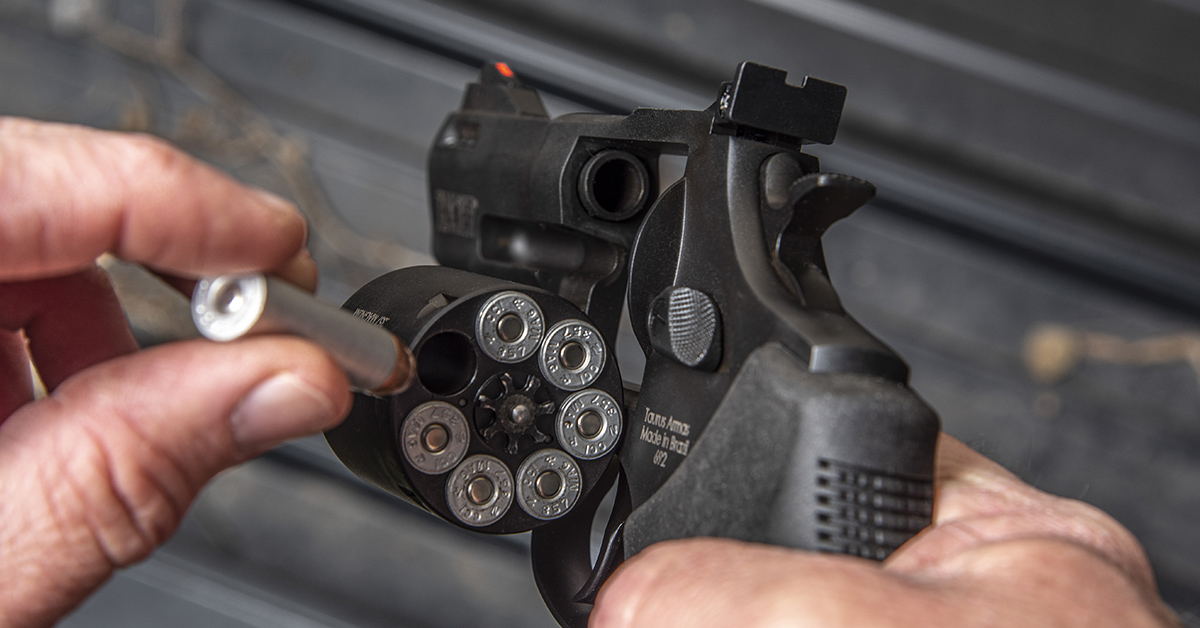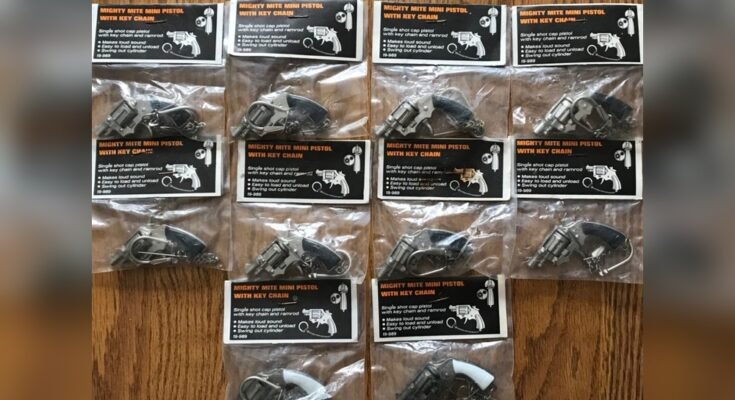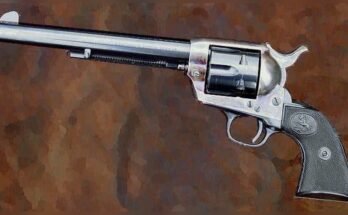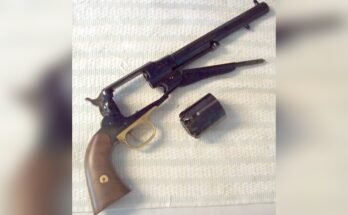Are you curious about how easy it is to reload a swing-out cylinder revolver? If you’ve ever handled one or thought about using one, you might wonder if the process is quick or tricky.
Knowing how to reload your revolver smoothly can make a big difference, whether you’re at the shooting range or out in the field. You’ll discover exactly what makes swing-out cylinder revolvers unique and find out if reloading them is as simple as it looks.
Stick around—by the end, you’ll feel confident about handling your revolver like a pro.
Swing-out Cylinder Basics
The swing-out cylinder is a key feature in many revolvers. It allows the shooter to reload quickly and easily. Understanding its basics helps to see why these revolvers are popular. The design lets the cylinder pivot out to the side. This gives full access to all chambers at once. Reloading becomes faster than older styles. It also helps to clear misfires or jams with ease.
Many people find swing-out cylinder revolvers simple to use. The mechanics make loading and unloading smooth. This design changed the way revolvers work and improved their usability. It is important to know how the swing-out cylinder operates before using one.
Design And Mechanics
The swing-out cylinder is attached to the frame by a crane or yoke. This part swings the cylinder out from the revolver’s body. Once open, all chambers are visible and accessible. The shooter can eject spent cartridges quickly. Then, new cartridges can be inserted into each chamber. Closing the cylinder locks it back into place securely. This design ensures fast reloading and safe handling.
Inside, a star-shaped ejector pushes out all spent cases together. This saves time compared to ejecting each cartridge one by one. The mechanism is simple but effective. It combines speed, safety, and ease of use in one system.
Common Models
Several popular revolvers use the swing-out cylinder design. The Smith & Wesson Model 686 is a well-known example. It is favored by law enforcement and sport shooters. The Ruger GP100 is another reliable model. Both are praised for durability and quick reload capability.
Other models include the Colt Detective Special and the Taurus Model 66. These guns have helped define the swing-out cylinder style. They offer users a balance of power, accuracy, and convenience. The wide availability of these models makes the design familiar to many shooters.

Reloading Process
The reloading process of swing-out cylinder revolvers is straightforward. It involves a few clear steps that any shooter can learn quickly. Understanding these steps helps improve speed and safety during shooting sessions.
Opening The Cylinder
Start by locating the cylinder release latch. Push or pull it to unlock the cylinder. Then swing the cylinder out to the side of the revolver. This exposes the chambers for easy access. The design lets the shooter see all chambers at once.
Ejecting Spent Cartridges
Next, press the ejector rod located in the center of the cylinder. This pushes out all empty casings together. Ejecting spent cartridges at once saves time. Make sure all shells clear the chambers before loading.
Loading Fresh Rounds
Insert new cartridges one by one into the empty chambers. Push each round firmly to ensure proper seating. After loading, swing the cylinder back into place. Lock the cylinder securely before firing again.
Speed Factors
Speed matters when reloading swing-out cylinder revolvers. Several factors affect how fast you can reload. Understanding these factors helps improve your reload times. Here are the main speed elements you should know.
Cylinder Rotation
The cylinder must rotate smoothly for quick access to chambers. A tight or sticky cylinder slows down reloading. A well-maintained cylinder spins easily, speeding up the process. Rotating the cylinder fast lets you eject and reload rounds faster.
Ejector Rod Efficiency
The ejector rod pushes out spent cartridges from the cylinder. A long, easy-to-use ejector rod saves time. If the rod is stiff or short, it takes longer to clear the cylinder. Smooth rod action helps clear all cases quickly in one push.
User Skill Level
Practice improves reload speed with swing-out cylinder revolvers. Experienced users open, eject, and reload faster than beginners. Muscle memory helps perform tasks without thinking. The more you practice, the faster and smoother your reload will be.
Comparison With Other Revolvers
Comparing swing-out cylinder revolvers to other types helps understand their reload speed. Different designs affect how fast and easy you can reload your revolver. Each style has unique features that impact user experience. Let’s explore two main types: top-break revolvers and fixed cylinder revolvers.
Top-break Revolvers
Top-break revolvers open by hinging the barrel and cylinder downward. This exposes all chambers at once for quick reload. Spent cartridges eject automatically as you open the gun. Reloading is faster than with fixed cylinder revolvers. However, top-break designs are less common today. They often use smaller calibers and lighter frames. Swing-out cylinder revolvers usually offer stronger frames for bigger rounds.
Fixed Cylinder Revolvers
Fixed cylinder revolvers have a cylinder that does not move for reloading. You load and unload each chamber one by one. Speed loaders can help, but reloading is slower than swing-out cylinders. This design is simpler but less efficient for quick reloads. Fixed cylinders are often found on older or simpler models. Swing-out cylinder revolvers provide a good balance of strength and reload speed.
Tips For Faster Reloads
Reloading a swing-out cylinder revolver quickly is a skill that improves with the right approach. Simple tips can help you reload faster and keep your shooting smooth. Focus on practice, tools, and care for your revolver to speed up the process.
These tips make reloading easier and less stressful, especially under pressure.
Practice Techniques
Regular practice builds muscle memory for fast reloads. Start slow, focusing on each step: open the cylinder, eject spent shells, insert new rounds, and close the cylinder. Repeat until you can do it smoothly without thinking. Use dry fire drills to practice safely without live ammo. Time yourself to track progress and push for faster reloads gradually.
Using Speedloaders
Speedloaders hold several rounds together for quick loading. They reduce the time spent inserting each cartridge one by one. Choose a speedloader that fits your revolver model. Practice removing spent shells and snapping the speedloader into place fast. This tool is especially helpful for competitive shooting or self-defense situations.
Maintenance For Smooth Operation
Keep your revolver clean and well-oiled for easy reloading. Dirt or rust can slow down the cylinder swing and ejector rod. Check moving parts regularly and clean the cylinder chambers. Lubricate hinges and the ejector to ensure smooth opening and closing. A well-maintained revolver reloads faster and works reliably every time.

Common Challenges
Swing-out cylinder revolvers offer a classic feel and solid reliability. Yet, reloading them is not always smooth. Several common challenges can slow down the process or cause issues. Knowing these challenges helps you prepare and reload better.
Jammed Cylinders
Sometimes the cylinder does not swing out easily. Dirt, grime, or small damage can cause this. A jammed cylinder blocks quick access to the chambers. It can also make reloading frustrating and slow.
Regular cleaning and careful handling reduce cylinder jams. Checking the cylinder release latch helps prevent this problem.
Ejector Rod Wear
The ejector rod pushes spent cases out of the cylinder. Frequent use can wear it down or bend it. A worn ejector rod may not fully eject cartridges. This leaves cases stuck inside, making reloading hard.
Inspect the ejector rod regularly. Replace it if it shows signs of bending or wear.
Handling Under Stress
Reloading fast during stress is tough. Hands may shake, and focus can drop. This makes aligning the cylinder and cartridges tricky. Mistakes happen more often under pressure.
Practice slow and steady reloading. Build muscle memory to improve speed and accuracy. This helps manage stress during real situations.
Frequently Asked Questions
Are Swing-out Cylinder Revolvers Faster To Reload?
Yes, swing-out cylinder revolvers allow quicker reloading by swinging the cylinder out. This exposes all chambers simultaneously for easy cartridge removal and insertion, speeding up the process compared to fixed-cylinder revolvers.
What Makes Swing-out Cylinders User-friendly?
Swing-out cylinders are user-friendly due to their simple design. They provide easy access to all chambers at once, reducing reload time. This design also helps avoid fumbling, making it ideal for beginners and professionals alike.
Can Beginners Easily Reload Swing-out Cylinder Revolvers?
Yes, beginners find swing-out cylinder revolvers easier to reload. The visible chambers and straightforward mechanism allow quick learning. This design minimizes errors and improves handling efficiency during reloading.
Do Swing-out Cylinders Require Special Tools To Reload?
No, swing-out cylinder revolvers do not require special tools. Reloading is done manually by swinging the cylinder out and inserting cartridges. This simplicity makes them convenient for field use and casual shooting.
Conclusion
Swing-out cylinder revolvers offer a simple way to reload quickly. Opening the cylinder lets you eject all spent cartridges at once. This design saves time compared to older revolvers. Reloading feels smooth after some practice. It is not hard to learn.
Keep the speed steady and focus on safety. Many shooters find these revolvers reliable for fast reloading. So, yes, swing-out cylinder revolvers are easy to reload for most users.



